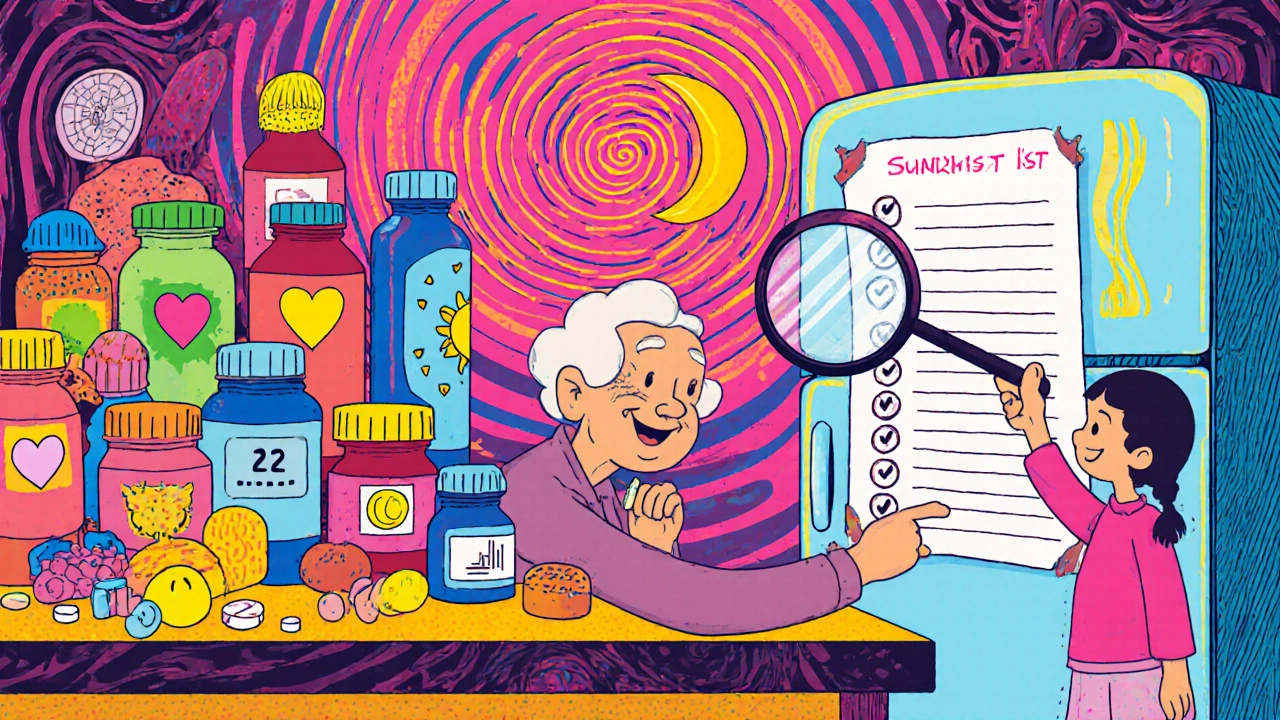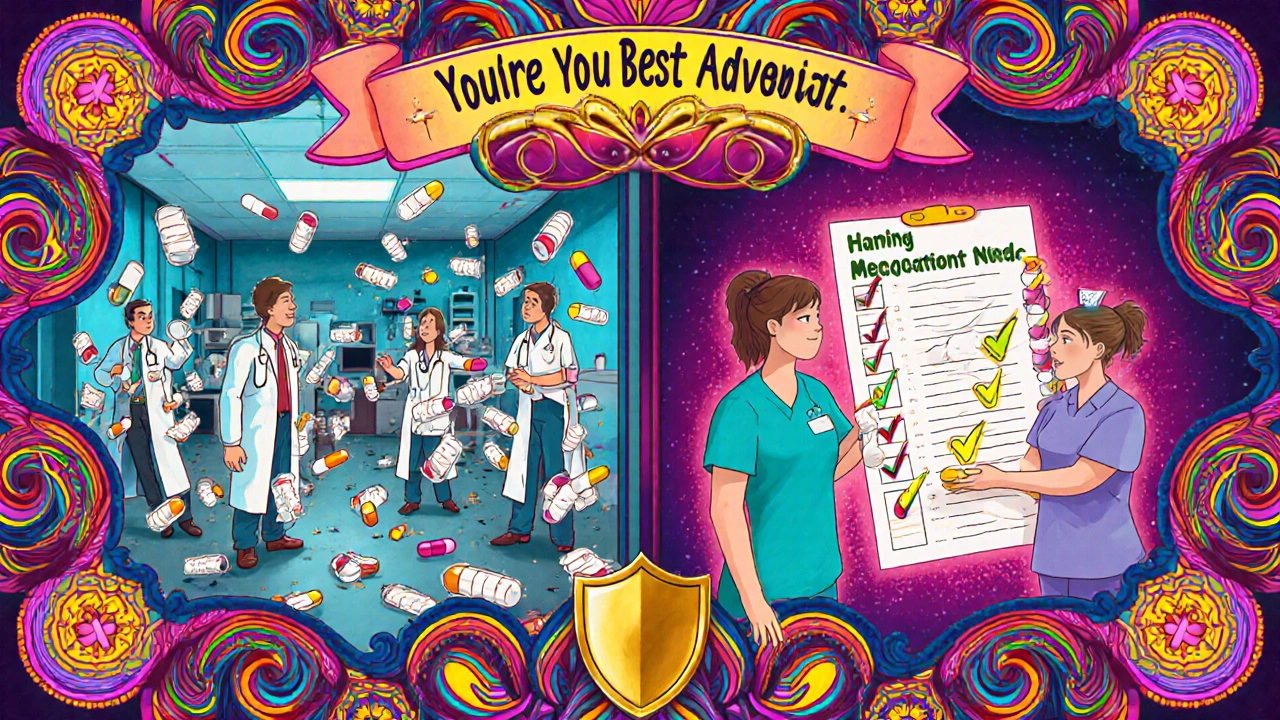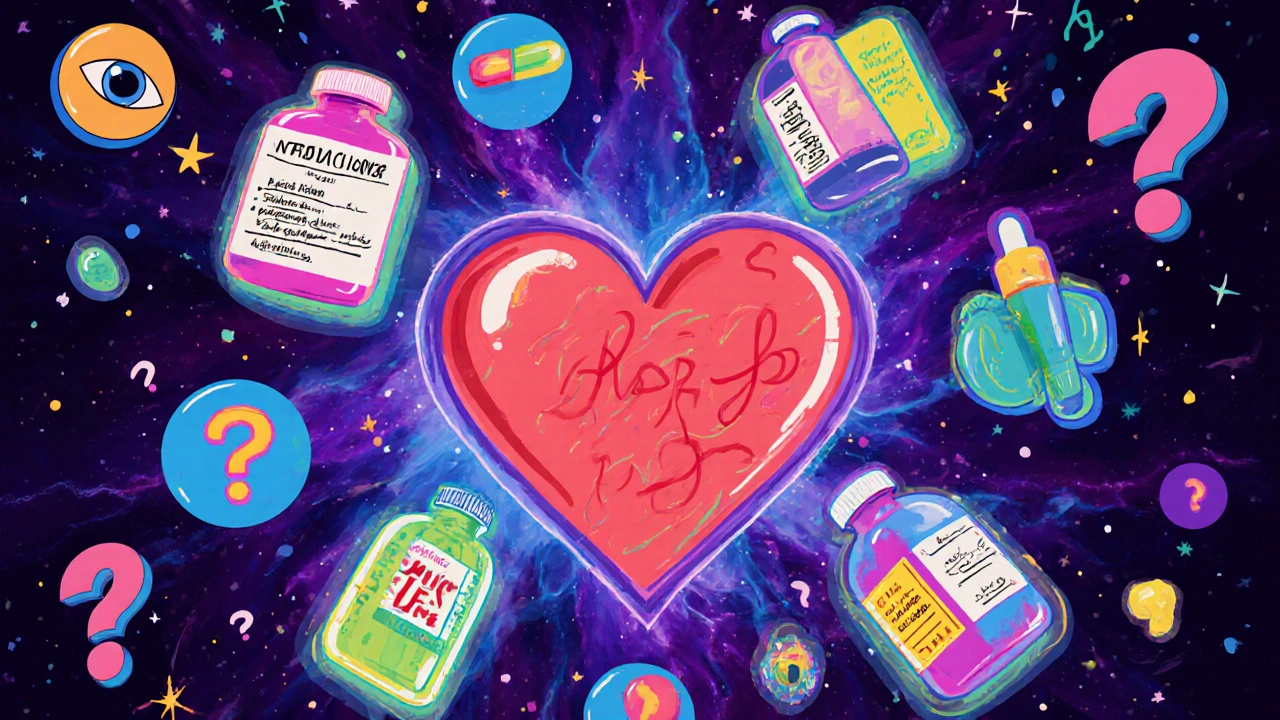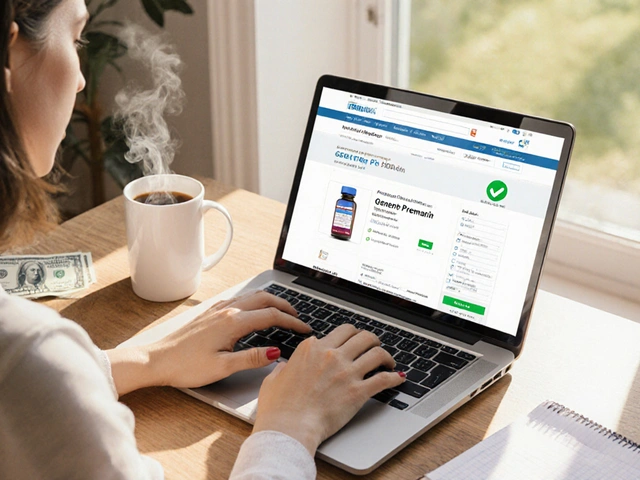Why Your Medication List Matters More Than You Think
Think about the last time you saw a doctor, went to the ER, or got discharged from the hospital. Did they ask you what medications you’re taking? If you answered from memory, you’re not alone-but you’re also at risk. Studies show that medication errors happen in nearly half of all transitions between care settings, and most of them are preventable. The biggest culprit? Incomplete or outdated medication lists.
It’s not just about forgetting a pill. It’s about missing that over-the-counter painkiller you take daily, the herbal supplement your cousin swore by, or the eye drop you only use when your allergies flare up. These small omissions can trigger dangerous interactions, duplicate prescriptions, or mask symptoms that should be treated differently. When your care team doesn’t have the full picture, they’re flying blind.
That’s why keeping a complete, accurate medication list isn’t just a good habit-it’s a safety lifeline. The Joint Commission made it a national patient safety goal back in 2006. Since then, research has only reinforced it: patients who maintain detailed medication lists reduce their risk of adverse drug events by 43%, according to a major Harvard study of over 8,400 people. That’s not a small number. That’s life-changing.
What Belongs on a Complete Medication List
A medication list isn’t just a scrap of paper with a few drug names. To be useful for safe care coordination, it needs to be thorough. Here’s exactly what to include:
- Medication name-both generic and brand (e.g., lisinopril and Zestril)
- Dosage strength-don’t just write “blood pressure pill.” Write “lisinopril 10 mg”
- How and when to take it-“once daily with breakfast,” “as needed for pain,” “two puffs in the morning”
- Why you’re taking it-“for high blood pressure,” “for arthritis pain,” “for sleep”
- Date started-this helps your doctor spot patterns or side effects
- Who prescribed it-name and contact info for each prescriber
- Refill status-how many days left, next refill date
- Allergies and reactions-not just “penicillin allergy,” but “rash and swelling after amoxicillin”
- All non-oral meds-topical creams, inhalers, patches, eye drops, injections
- Supplements and herbs-vitamin D, fish oil, turmeric, St. John’s wort
- Emergency contact and pharmacy info
- Last time taken-especially important for PRN (as-needed) meds
Many people leave out supplements and OTC drugs. A 2022 study found that 58% of patients forget to mention these. But that’s exactly where the hidden risks live. Taking ibuprofen with blood thinners? That’s a recipe for bleeding. Mixing herbal teas with antidepressants? That’s a potential hospital trip.
How to Build Your List (Step by Step)
Building a full list sounds overwhelming-but it doesn’t have to be. Here’s how to do it in one focused session:
- Gather everything-pull out all your pill bottles, supplement jars, inhalers, patches, and creams. Don’t skip the ones you haven’t used in months.
- Write it down-use a notebook, template, or app. Don’t rely on your phone’s notes app unless it’s backed up. Paper works just fine-68% of patients still use it, and the FDA recommends a 12-point font minimum for readability.
- Check with your pharmacy-call your pharmacy. They have a full record of everything you’ve filled. Ask them to email or print a copy. Compare it to your list. You’ll likely find gaps.
- Include PRN meds-if you take something “as needed,” write down how often you’ve used it in the last month. “Ibuprofen 400 mg, 3 times in the past 30 days” is more helpful than just “ibuprofen.”
- Don’t forget the extras-vitamins, CBD oil, magnesium, melatonin, herbal teas, even topical steroids for eczema. If you take it, it goes on the list.
Most people finish this in 20-30 minutes. Do it once, and then update it every time something changes-new prescription, stopped pill, added supplement. Keep it in your wallet, phone, or both.

Why Digital Tools Help (But Aren’t Enough)
There are apps like GoodRx, Medisafe, and MyTherapy that help track meds. Over 42% of GoodRx’s 150 million users use their built-in medication list feature. These tools are great for reminders, refill alerts, and sharing with family. But here’s the catch: apps can’t replace active management.
A 2024 study found that 73% of patient-reported medication lists-whether digital or paper-still had at least one major error. Why? Because people forget to update them. Or they use multiple apps and lose track. Or they rely on the EHR in their doctor’s portal, which may not include supplements or OTC drugs.
Best practice? Use a digital tool as a backup, not your only source. Keep a printed copy you can hand to a nurse during an ER visit. Sync your app with your pharmacy’s system if possible. And always, always double-check what’s in your EHR portal against your own list. Don’t assume it’s right.
When and How to Review It With Your Doctor
Don’t wait for your annual checkup to mention your meds. Don’t squeeze it in at the end of a 10-minute visit. A 2023 study found that 68% of medication discussions get cut short when they’re tacked onto other appointments.
Instead, schedule a dedicated 20-minute “medication review” appointment. Bring your list. Ask these questions:
- “Is everything I’m taking still necessary?”
- “Are any of these interacting with each other?”
- “Can any of these be simplified or combined?”
- “Are there any new guidelines I should know about?”
Doctors who use annual synchronized prescription renewals-filling 90-day supplies every three months-save over 2.7 hours per day in administrative time. That means they’re more likely to listen. And you’re more likely to get a clear, accurate plan.
Also, ask if your clinic uses an EHR-integrated patient portal. Practices that do see 40% higher patient compliance with medication list updates. If yours doesn’t, ask why-and suggest it. Your safety matters.

Special Cases: Complex Regimens, Seniors, and Rural Patients
If you’re on five or more medications, your risk of error goes up. Studies show color-coding pills or using icons (e.g., a heart for blood pressure, a moon for sleep) improves adherence by 27%. Try using different colored pill boxes or a printable weekly chart.
For older adults, digital tools can be a barrier. Only 28% of adults over 75 use apps without help. That’s why paper lists are still essential. Keep a copy taped to the fridge, in your wallet, and with a family member. If you need help, ask a caregiver, pharmacist, or community health worker to sit with you and build the list.
Rural patients are 2.3 times less likely to have complete medication documentation than urban ones. If you’re in a remote area, make your list extra detailed. Include contact info for your pharmacy, your specialist, and your local clinic. Keep printed copies in your car, your bag, and at home. In emergencies, you might be the only one who knows what you’re taking.
What’s Changing in 2025 and Beyond
Health systems are finally catching up. Since the 21st Century Cures Act was fully enforced in 2022, all certified EHRs must give patients immediate access to their medication lists. By 2027, the government wants everyone to have a consolidated, portable record.
Medicare and Medicaid now penalize hospitals that don’t meet 85% accuracy on medication reconciliation. That means your list isn’t just helpful-it’s becoming part of how hospitals get paid.
And in the future, blockchain-based medication records could create tamper-proof, patient-controlled histories. But that’s years away. Right now, the most powerful tool you have is the one you hold in your hand-or on your phone.
Final Checklist: Your Medication List in 5 Minutes
Before your next doctor visit, run through this quick checklist:
- ☐ I have every prescription, OTC, supplement, and herbal product listed
- ☐ I included dosage, frequency, and reason for each
- ☐ I noted allergies with specific reactions
- ☐ I added topical, inhaler, and eye drop medications
- ☐ I wrote down when I last took each as-needed medication
- ☐ I have a printed copy and a digital backup
- ☐ I shared this list with at least one family member or caregiver
- ☐ I scheduled a dedicated medication review with my doctor
If you checked all eight, you’ve done more than most. You’ve taken control. You’ve reduced your risk. You’ve made your care safer-not just for you, but for everyone involved in it.
What if I forget to update my medication list?
Forgetting is common, but the consequences can be serious. A 2024 study found that 73% of patient-reported lists had at least one error because they weren’t updated. Set a monthly reminder on your phone to review your meds. Every time you refill a prescription, check your list. If you’re unsure whether you took a pill today, write it down as “unknown” until you confirm. Better to be honest than assume.
Should I include vitamins and supplements?
Yes-absolutely. Supplements aren’t regulated like prescription drugs, so they can interact dangerously. For example, St. John’s wort can reduce the effectiveness of birth control and antidepressants. Fish oil can thin your blood, which is risky if you’re on warfarin. Even common ones like vitamin E or garlic pills can interfere with surgery or blood pressure meds. Always list them, including dosage and brand if possible.
Can my pharmacist help me build my list?
Yes, and you should ask. Pharmacists have access to your full fill history and can spot duplicates, interactions, or missing meds. Many offer free medication reviews. Bring your current list and all your bottles. They’ll compare what you think you’re taking with what’s actually in your record. This is one of the most underused safety tools in healthcare.
What if I don’t trust my doctor’s EHR list?
You shouldn’t trust it blindly. EHRs often miss supplements, OTC drugs, and meds from other providers. A 2023 study showed that 40-60% of medication histories in EHRs contain errors. Always compare your own list to the one in your portal. If something’s missing, print your list and hand it to the provider. You are your own best advocate.
Is it safe to carry my medication list in my phone?
It’s safe if you back it up and protect it. Use a secure app like GoodRx or Medisafe that allows cloud backup. Don’t just use a notes app unless you’ve encrypted it. Always keep a printed copy in your wallet or purse. In an emergency, paramedics and ER staff can’t access your phone unless you’re conscious and able to unlock it. Paper never dies.
How often should I update my medication list?
Update it immediately after any change: new prescription, stopped medication, changed dose, or added supplement. Even if you think it’s minor. Then do a full review every three months. If you’re on chronic meds, schedule an annual medication review with your doctor. That’s when you’ll catch things like outdated prescriptions, unnecessary duplicates, or new guidelines.
What if I can’t read or write well?
You’re not alone. Many older adults and people with low literacy struggle with written lists. Ask your pharmacist, nurse, or community health worker to help you. Use pictures: take photos of your pill bottles and label them with voice notes on your phone. Or use color-coded pill boxes with large labels. Some clinics offer visual medication charts with icons. Your safety doesn’t depend on reading-it depends on having someone who can help you communicate what you take.






